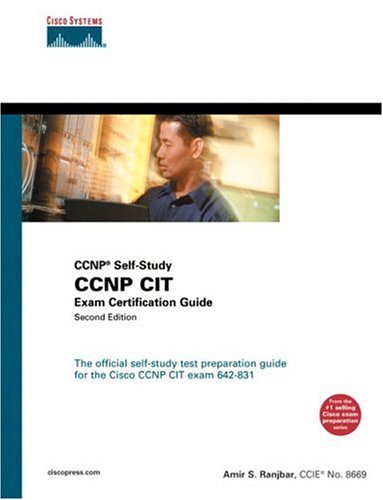

Most ebook files are in PDF format, so you can easily read them using various software such as Foxit Reader or directly on the Google Chrome browser.
Some ebook files are released by publishers in other formats such as .awz, .mobi, .epub, .fb2, etc. You may need to install specific software to read these formats on mobile/PC, such as Calibre.
Please read the tutorial at this link. https://ebooknice.com/page/post?id=faq
We offer FREE conversion to the popular formats you request; however, this may take some time. Therefore, right after payment, please email us, and we will try to provide the service as quickly as possible.
For some exceptional file formats or broken links (if any), please refrain from opening any disputes. Instead, email us first, and we will try to assist within a maximum of 6 hours.
EbookNice Team

Status:
Available4.5
25 reviewsPrepare for the new CCNP 642-831 CIT Exam with the official test preparation guide
CCNP CIT Exam Certification Guide (CCNP Self-Study) is a comprehensive study tool for preparing for the new CCNP 642-831 CIT exam. This book is the second edition of the best-selling preparation title for the CCNP CIT exam from Cisco Press, also authored by Amir Ranjbar.
Comprehensive coverage of all exam topics ensures readers will arrive at a complete understanding of what they need to master to succeed on the exam. This book follows a logical organization of the CCNP CIT exam objectives, and is written in a modular, small-chapter format that breaks the elements into easy-to-absorb parts. It also contains the other valuable learning elements of an Exam Certification Guide from Cisco Press that ensure concept comprehension and retention. These include pre- and post-chapter quizzes, foundational review sections, scenario-based exercises, and a CD-ROM testing engine with more than 200 questions, including simulation-based questions like on the actual exam.
The organization of this edition has been radically altered to align with the new CIT objectives that focus on troubleshooting methodologies to resolve problems at the Physical, Data Link, Network, Transport, and Application layers of the OSI Model.